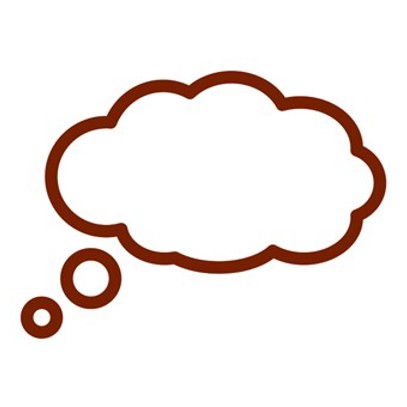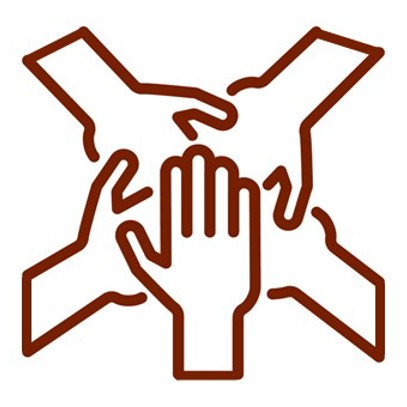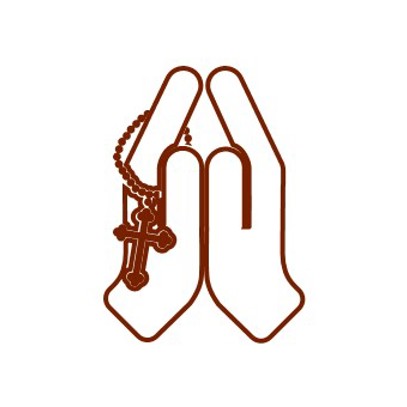Subsidiarity and Participation
Middle Primary
How can we participate in making the world better?

Janice (right) shows her daughters how to prepare pandanus leaves to make fibre artworks to sell. Photo: Richard Wainwright
Inquiry Question: How can we participate in making the world better?
By the end of this unit, students will be able to understand the importance of participation in building strong resilient communities.
Before you start:
- Watch the Catholic Social Teaching (CST) film, ‘Subsidiarity and Participation’, for your own background and familiarise yourself with the Subsidiarity and Participation poster.
- Download the various resources referenced at the bottom of this page (worksheets, slides etc.) Print the student handout and have the links ready to go on your computer/interactive whiteboard.
- Read/watch the stories and videos linked in this learning sequence to determine if they are appropriate for your class.
- Locate any Scripture passages and copies of Church texts (hyperlinked within the learning sequence below)
See-Judge-Act-Pray Process
This learning sequence has been created using the ‘See, Judge and Act’ model.
This reflection–action process was first used by a Belgian Catholic priest, Joseph Cardijn (who later became a Cardinal) with Young Christian workers prior to the first World War.
This approach was also recommended in the 1961 encyclical letter written by Pope John XXIII called Mater et Magistra (Mother and Teacher).
Definition
- from the Latin word subsidium, meaning support or assistance
- the idea that people and groups have the right to participate in decisions that affect them and, when they can’t meet their own needs, other parts of society (e.g. the government) act according to their duty to assist with resources and support
- an approach to common life that promotes participation and ensure people are architects of their own development
Student-friendly explanation:
-
All people should be able to participate in their community and have a say in decisions that affect them.
Learning intention
We are learning:
- about our own rights and responsibilities
- how Caritas Australia uses a strengths-based approach to support communities in need
- how we can use our gifts and talents to help others.

SEE
Print enough copies of the What are my gifts and talents? worksheet from the student handout and write the name of a different student on each one.
Randomly break students into small groups of 6 and provide them the What are my gifts and talents? Worksheet, making sure that students in each group don’t get their own one.
Play ‘add and pass’. Provide students 2 mins to record a gift or talent they believe the individual, whose name is written on the sheet, has. Once the 2 minutes is up, students hand the sheet to the person on their left. Repeat the last two steps 5 times. The last person to write on the sheet, is asked to create a Coat of Arms (available in the student handout) for that individual. Record their name at the bottom of the shield. Each of the sections are to show their gifts and talents. Students present the Coat of Arms to the person. Invite students to take time on their own to reflect on the Coat of Arms that has been created for them. Display the Coat of Arms around the classroom.
Display the Subsidiarity and Participation poster. Read the statement at the bottom of the poster and discuss examples on the poster of people participating in their own lives and their community. Discuss the following points as a class:
- What are our rights and responsibilities? What is the difference between a right and responsibility?
- How can we use our gifts and talents to participate in our own lives? And the community?
- How can we use our gifts and talents to ensure everyone experiences their rights?
Print and cut out the Rights and Responsibilities statement cards from the student handout.
Ask students to sit in a circle as you place Rights and Responsibilities statement cards face upwards on the floor. Invite students to take a moment to review the statement cards. Explain that these cards name different rights and responsibilities children have. Students collaborate to categorise the cards into Rights and Responsibilities using a T-Chart. Engage students in a discussion looking at rights and responsibilities, people’s whose rights are broken and why people may not take on responsibility.
Participate in the gifted number stack activity. Collect building blocks and record the numbers 1 to 10, over and over, until all the blocks are numbered. Mix up the blocks and dump them into two giant piles. Choose two teams of ten children each. Ask if they are right-handed or left-handed. They are to play with the opposite hand they are naturally gifted with to make it more challenging. Write with a marker a number from 1 to 10 on the hand of each child. Record the number on the hand they are allowed to use. The teams are to race to build a pyramid with their pile of blocks. The order they build in doesn’t matter—however, the children can only touch a block that has the same number written on it as the number written on their hand! That is “their” block! The team that builds a pyramid first with all their blocks wins! If any part of the pyramid falls, they must fix it before continuing.
Debrief the activity. The teams needed to work together. The pyramid couldn’t be built unless every member did their part. The same is true with the family of God. We each have different gifts, and we all must do our part to build the kingdom of God!
Amended from source.
Strength-based Approach
Caritas Australia promotes a Strength-based Approach, supporting communities to identify and build on their existing collective strengths.
Explore the Strength-based Approach to Community Development – Primary presentation from slide 5.
When discussing slides 13 – 19, explore how Memory, her family and/or Caritas Australia are participating to make the world a better place. You may utilise Turn and Talk, to allow students time to develop ideas. In their workbook, students answer the following sentence starters:
- The challenges Memory experienced are …
- Memory was supported by …. as they …
- The strengths and assets Memory had are …
- Examples of participation I saw in Memory’s story are …
- The strengths and assets I have are …
- I can show support to Memory by participating in …

JUDGE
Display this quote by the Pontifical Council for Justice and Peace:
‘Participation is a duty to be fulfilled consciously by all, with responsibility and with a view to the common good.’
(Compendium of the Social Doctrine of the Church, n189).
Breakdown the meaning of the quote by exploring the terms ‘duty’ ‘fulfilled conscious’, ‘responsibility’ and ‘common good’. Using Turn and Talk, encourage students to share their understanding of these terms to be able to facilitate the discussion.
Read 1 Peter 4:10-11. Explain that this passage reminds us that our gifts are not for us, they are to be shared with others. By using our gifts to serve one another we can make the world better. Make your own flashcards that have a variety of activities written on them (e.g. drawing, speaking, helping others, playing ball). Design them to reflect your class’s gifts and talents.
Discuss with the class how these abilities can be used for good, at home, at school or in their community.
Amended from https://ministry-to-children.com/using-my-talents-object-lesson-1-peter-410-11/

Act
Display the Subsidiarity and Participation poster to remind students that we have a responsibility for those living in our community. Discuss alternative examples of how they can participate in the local community, at school, care for the environment, at home, and on a global scale. Invite students to reflect on commitments they can make by completing the of BE More: Action Planner handout.
Teacher Note: The class may like to action one of the ideas they have developed. Student Action Planner is a helpful resource to plan this.

Pray
Reading: 1 Peter 4:10-11.
Activity: Present students with a cut-out shape (e.g. circle, heart, hand etc.) and ask them to draw or write a gift or talent they are thankful for as it is something they can use to help others. Invite students to share this with the class. Display these with their Coat of Arms.
Song selections: We All Have Gifts to Share by Susan Kay Wyatts, Talents and Treasures by Joe Cruz












